-
 Bitcoin
Bitcoin $106,754.6083
1.33% -
 Ethereum
Ethereum $2,625.8249
3.80% -
 Tether USDt
Tether USDt $1.0001
-0.03% -
 XRP
XRP $2.1891
1.67% -
 BNB
BNB $654.5220
0.66% -
 Solana
Solana $156.9428
7.28% -
 USDC
USDC $0.9998
0.00% -
 Dogecoin
Dogecoin $0.1780
1.14% -
 TRON
TRON $0.2706
-0.16% -
 Cardano
Cardano $0.6470
2.77% -
 Hyperliquid
Hyperliquid $44.6467
10.24% -
 Sui
Sui $3.1128
3.86% -
 Bitcoin Cash
Bitcoin Cash $455.7646
3.00% -
 Chainlink
Chainlink $13.6858
4.08% -
 UNUS SED LEO
UNUS SED LEO $9.2682
0.21% -
 Avalanche
Avalanche $19.7433
3.79% -
 Stellar
Stellar $0.2616
1.64% -
 Toncoin
Toncoin $3.0222
2.19% -
 Shiba Inu
Shiba Inu $0.0...01220
1.49% -
 Hedera
Hedera $0.1580
2.75% -
 Litecoin
Litecoin $87.4964
2.29% -
 Polkadot
Polkadot $3.8958
3.05% -
 Ethena USDe
Ethena USDe $1.0000
-0.04% -
 Monero
Monero $317.2263
0.26% -
 Bitget Token
Bitget Token $4.5985
1.68% -
 Dai
Dai $0.9999
0.00% -
 Pepe
Pepe $0.0...01140
2.44% -
 Uniswap
Uniswap $7.6065
5.29% -
 Pi
Pi $0.6042
-2.00% -
 Aave
Aave $289.6343
6.02%
Is the continuous small positive line at a low level a fund accumulation? When will it start?
Continuous small positive candles at low levels may signal crypto accumulation by whales, hinting at potential future price moves when combined with on-chain data.
Jun 15, 2025 at 02:01 pm
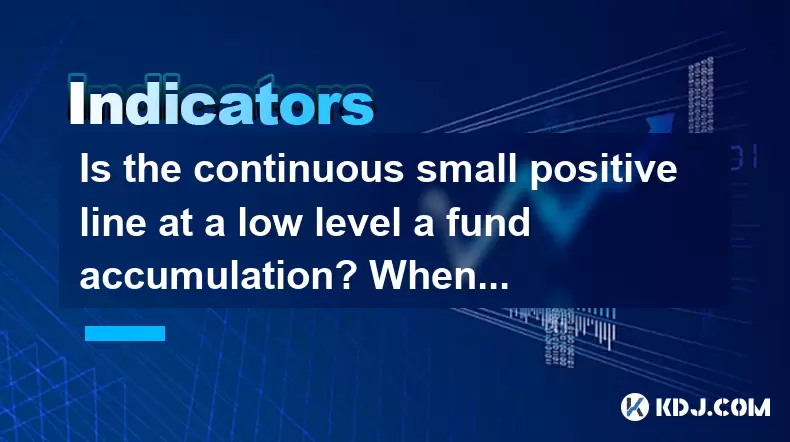
Understanding Continuous Small Positive Lines in Cryptocurrency Trading
In the realm of cryptocurrency trading, price action is one of the most telling indicators of market behavior. When observing a chart, especially over a period where continuous small positive lines at a low level appear, traders often speculate whether this pattern signifies something more than random movement.
A small positive line, typically represented by a green candlestick on Japanese candlestick charts, indicates that the closing price was slightly higher than the opening price during a given time frame. When these candles occur repeatedly at a relatively low price level, it may suggest accumulation activity by larger players such as institutional investors or whales.
Key Insight: Accumulation patterns are usually subtle and can be easily missed without close observation of volume and order book data.
What Does Accumulation Look Like on Charts?
Accumulation in crypto markets doesn't always manifest as sharp upward moves. Instead, it often appears as sideways or slightly upward trending price action with relatively low volatility. During this phase, large buyers may be purchasing assets quietly to avoid triggering a rapid price increase.
Some characteristics include:
- Continuous small positive candles appearing consistently over multiple time frames
- Volume remains moderate or slightly above average but not explosive
- Price fails to drop significantly despite minor selling pressure
- Order books show increased bids at certain support levels
Important Note: Accumulation zones are best confirmed when followed by a breakout in both price and volume.
Distinguishing Accumulation from Consolidation
It's crucial to differentiate between accumulation and consolidation. While they may look similar on a chart, their implications differ.
Consolidation occurs when the price moves within a tight range due to indecision among traders. It often precedes a breakout but isn’t necessarily linked to fund inflows.
Accumulation, on the other hand, implies that informed money is entering the market gradually. This process can take days or even weeks before a visible move begins.
Critical Factor: Monitoring on-chain metrics like exchange inflows/outflows and whale transactions can help identify real accumulation.
How to Confirm Fund Accumulation via On-Chain Data
To validate whether continuous small positive lines are indeed signs of accumulation, you can utilize blockchain analytics tools. These platforms provide insights into:
- Large wallet movements
- Exchange net flow (in/out)
- Holding behavior across different wallet sizes
- Smart contract interactions indicating buying pressure
For example, if you observe a net outflow from exchanges while the price shows mild strength, it could mean that holders are withdrawing funds, potentially signaling confidence in future gains.
Tool Recommendation: Platforms like Glassnode, Santiment, or IntoTheBlock offer detailed on-chain metrics for deeper analysis.
When Will the Price Start Moving Up?
One of the most challenging aspects of technical and on-chain analysis is predicting timing. Even if accumulation is evident, the exact start of a price rally cannot be determined with certainty.
Factors influencing the breakout include:
- Market sentiment and macroeconomic conditions
- News events or regulatory updates affecting crypto
- The completion of accumulation phase by major holders
- Technical resistance levels being tested and broken
Traders often watch for volume surges and candlestick breakouts above key resistance levels as early signs of an uptrend beginning.
Warning: Attempting to time the exact start of a rally can lead to missed opportunities or premature entries.
Practical Steps to Monitor Accumulation Patterns
If you're actively monitoring for accumulation, follow these steps closely:
- Use candlestick charts across multiple time frames (1-hour, 4-hour, daily) to spot consistent small gains
- Overlay volume profiles to check if rising prices coincide with increasing volume
- Monitor exchange balances using tools like Chainalysis or Etherscan for Ethereum-based tokens
- Analyze order book depth to see if there’s sustained bid support at specific levels
- Track social media and on-chain sentiment through platforms like Dune Analytics or CryptoQuant
Pro Tip: Combine technical analysis with fundamental developments related to the asset to better understand potential catalysts.
Frequently Asked Questions
Q: Can accumulation happen without any visible price movement?
Yes, accumulation can occur in a sideways market where buyers absorb sell orders without pushing the price up significantly. This is often seen before major rallies.
Q: How long does an accumulation phase typically last in crypto markets?
There’s no fixed duration. It can last from a few days to several months depending on market structure and participant behavior.
Q: Are small positive candles reliable indicators of accumulation?
They can be part of the signal, but should never be used in isolation. Always cross-reference with volume, on-chain data, and order book dynamics.
Q: Should retail traders try to enter during accumulation phases?
Retail traders can participate cautiously, but should use stop-loss orders and position sizing to manage risk since accumulation doesn’t guarantee an immediate breakout.
Disclaimer:info@kdj.com
The information provided is not trading advice. kdj.com does not assume any responsibility for any investments made based on the information provided in this article. Cryptocurrencies are highly volatile and it is highly recommended that you invest with caution after thorough research!
If you believe that the content used on this website infringes your copyright, please contact us immediately (info@kdj.com) and we will delete it promptly.
- 2025-W Uncirculated American Gold Eagle and Dr. Vera Rubin Quarter Mark New Products
- 2025-06-13 06:25:13
- Ruvi AI (RVU) Leverages Blockchain and Artificial Intelligence to Disrupt Marketing, Entertainment, and Finance
- 2025-06-13 07:05:12
- H100 Group AB Raises 101 Million SEK (Approximately $10.6 Million) to Bolster Bitcoin Reserves
- 2025-06-13 06:25:13
- Galaxy Digital CEO Mike Novogratz Says Bitcoin Will Replace Gold and Go to $1,000,000
- 2025-06-13 06:45:13
- Trust Wallet Token (TWT) Price Drops 5.7% as RWA Integration Plans Ignite Excitement
- 2025-06-13 06:45:13
- Ethereum (ETH) Is in the Second Phase of a Three-Stage Market Cycle
- 2025-06-13 07:25:13
Related knowledge

How to confirm the effectiveness of the average price line support in the time-sharing chart?
Jun 17,2025 at 12:56am
Understanding the Time-Sharing Chart and Its RelevanceIn cryptocurrency trading, time-sharing charts play a crucial role in analyzing short-term price movements. These charts typically display price fluctuations over a specific period, often ranging from minutes to hours. Traders rely on them to make quick decisions based on real-time data. The average ...

What does it mean when the momentum indicator breaks above the zero axis?
Jun 17,2025 at 12:43am
Understanding the Momentum IndicatorThe momentum indicator is a technical analysis tool used to measure the speed or velocity of price movements in cryptocurrency markets. It helps traders identify potential trend reversals, overbought or oversold conditions, and confirms existing trends. The indicator typically oscillates around a zero line, with value...
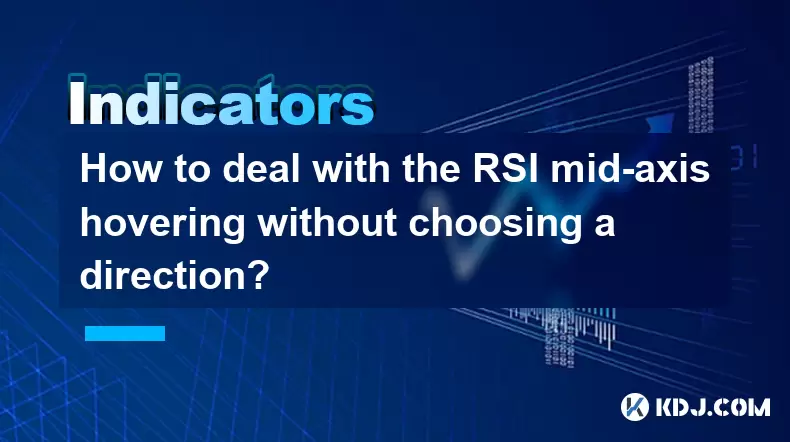
How to deal with the RSI mid-axis hovering without choosing a direction?
Jun 17,2025 at 02:02am
Understanding RSI Mid-Axis Hovering in Cryptocurrency TradingThe Relative Strength Index (RSI) is a popular momentum oscillator used by traders to assess whether an asset is overbought or oversold. In cryptocurrency markets, it's common for the RSI to hover around its mid-axis, typically at the 50 level, without showing a clear upward or downward trend....
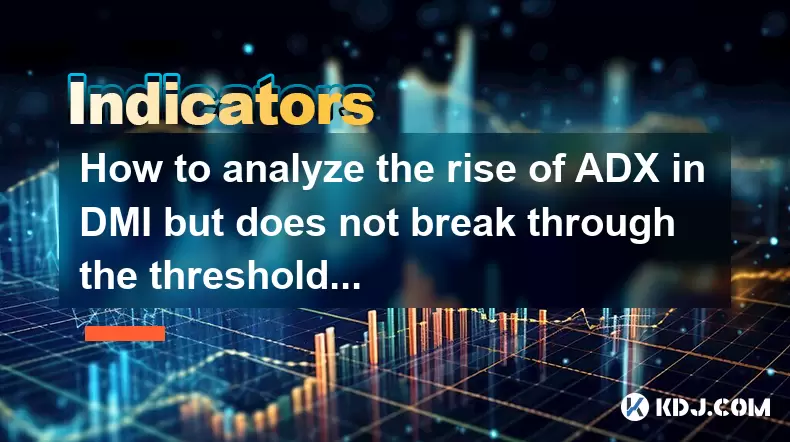
How to analyze the rise of ADX in DMI but does not break through the threshold?
Jun 16,2025 at 11:49pm
Understanding ADX and DMI in Cryptocurrency TradingIn cryptocurrency trading, ADX (Average Directional Index) is a technical indicator used to measure the strength of a trend. It works in conjunction with the DMI (Directional Movement Indicator), which includes two components: +DI (Positive Directional Indicator) and -DI (Negative Directional Indicator)...
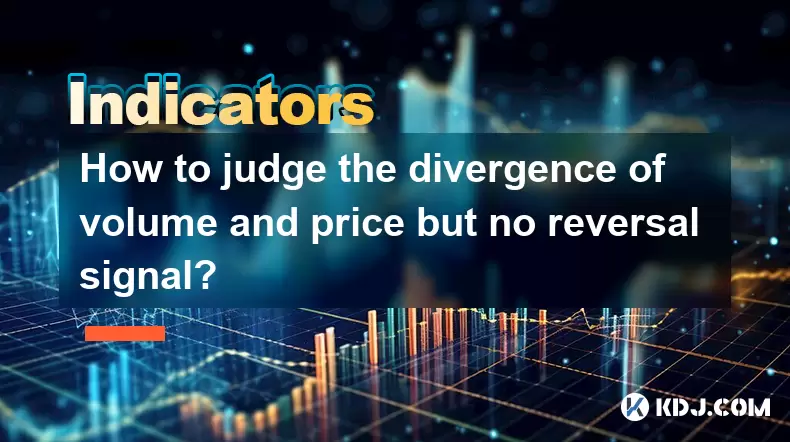
How to judge the divergence of volume and price but no reversal signal?
Jun 17,2025 at 12:28am
Understanding Volume and Price DivergenceIn the world of cryptocurrency trading, volume and price are two key indicators that traders monitor closely. Divergence occurs when these two metrics move in opposite directions. For example, if the price of a cryptocurrency is rising but its volume is declining, this could signal weakening momentum. However, it...
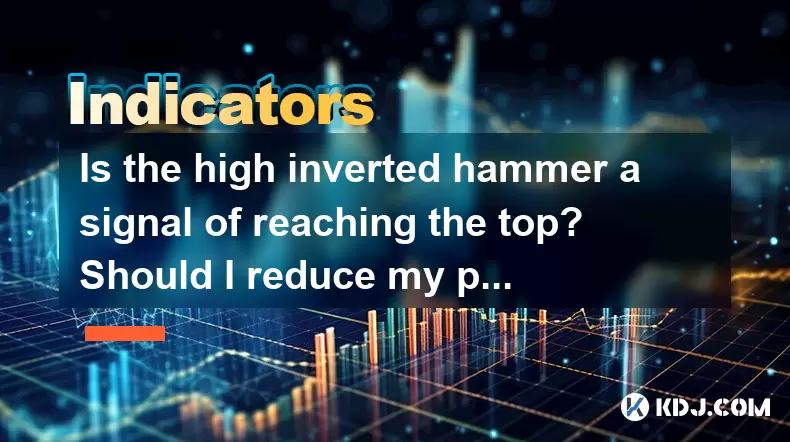
Is the high inverted hammer a signal of reaching the top? Should I reduce my position?
Jun 17,2025 at 02:28am
What Is a High Inverted Hammer Candlestick Pattern?The high inverted hammer is a candlestick pattern often observed in cryptocurrency price charts. It appears as a candle with a small body near the lower end of the trading range, accompanied by a long upper wick that is typically two to three times the length of the body. This formation suggests that bu...

How to confirm the effectiveness of the average price line support in the time-sharing chart?
Jun 17,2025 at 12:56am
Understanding the Time-Sharing Chart and Its RelevanceIn cryptocurrency trading, time-sharing charts play a crucial role in analyzing short-term price movements. These charts typically display price fluctuations over a specific period, often ranging from minutes to hours. Traders rely on them to make quick decisions based on real-time data. The average ...

What does it mean when the momentum indicator breaks above the zero axis?
Jun 17,2025 at 12:43am
Understanding the Momentum IndicatorThe momentum indicator is a technical analysis tool used to measure the speed or velocity of price movements in cryptocurrency markets. It helps traders identify potential trend reversals, overbought or oversold conditions, and confirms existing trends. The indicator typically oscillates around a zero line, with value...

How to deal with the RSI mid-axis hovering without choosing a direction?
Jun 17,2025 at 02:02am
Understanding RSI Mid-Axis Hovering in Cryptocurrency TradingThe Relative Strength Index (RSI) is a popular momentum oscillator used by traders to assess whether an asset is overbought or oversold. In cryptocurrency markets, it's common for the RSI to hover around its mid-axis, typically at the 50 level, without showing a clear upward or downward trend....

How to analyze the rise of ADX in DMI but does not break through the threshold?
Jun 16,2025 at 11:49pm
Understanding ADX and DMI in Cryptocurrency TradingIn cryptocurrency trading, ADX (Average Directional Index) is a technical indicator used to measure the strength of a trend. It works in conjunction with the DMI (Directional Movement Indicator), which includes two components: +DI (Positive Directional Indicator) and -DI (Negative Directional Indicator)...

How to judge the divergence of volume and price but no reversal signal?
Jun 17,2025 at 12:28am
Understanding Volume and Price DivergenceIn the world of cryptocurrency trading, volume and price are two key indicators that traders monitor closely. Divergence occurs when these two metrics move in opposite directions. For example, if the price of a cryptocurrency is rising but its volume is declining, this could signal weakening momentum. However, it...

Is the high inverted hammer a signal of reaching the top? Should I reduce my position?
Jun 17,2025 at 02:28am
What Is a High Inverted Hammer Candlestick Pattern?The high inverted hammer is a candlestick pattern often observed in cryptocurrency price charts. It appears as a candle with a small body near the lower end of the trading range, accompanied by a long upper wick that is typically two to three times the length of the body. This formation suggests that bu...
See all articles

























































































